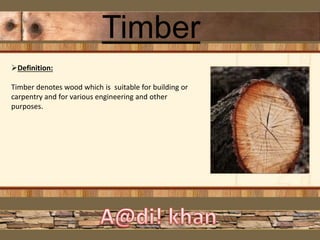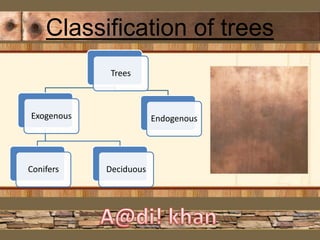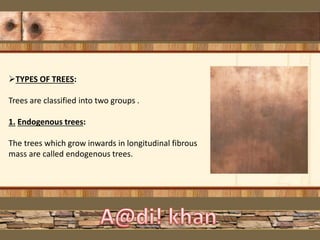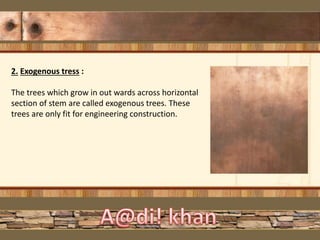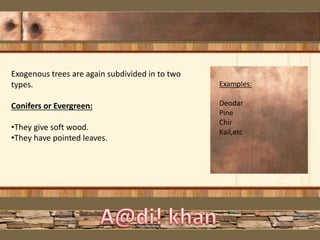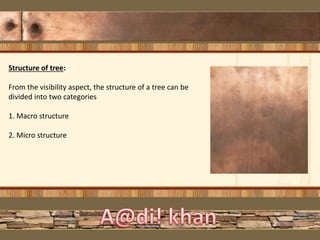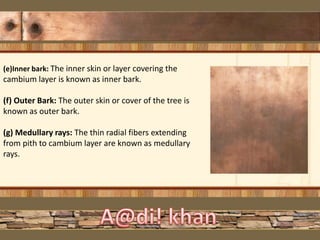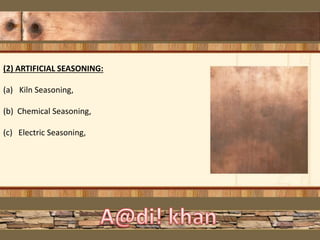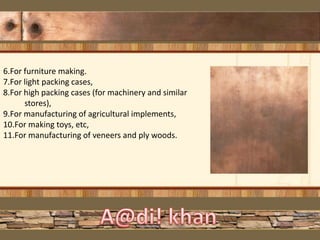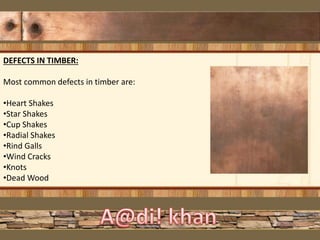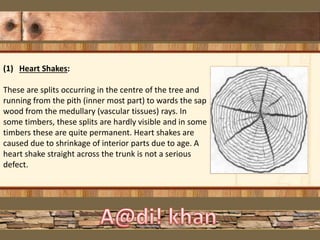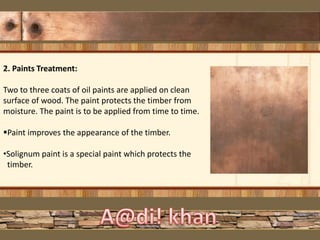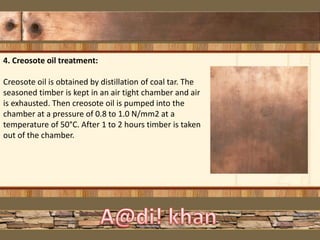Timber comes from wood obtained from trees and is suitable for construction and other purposes. There are two main types of trees - exogenous and endogenous - with exogenous trees like conifers and deciduous trees most suitable for engineering. Timber has a macro structure visible to the eye like the pith, heartwood, and sapwood, as well as a micro structure only visible at high magnifications. Seasoning removes sap from fresh timber to make it stronger, lighter, and more durable. Common seasoning methods include natural, kiln, chemical and water seasoning. Timber is used widely in construction and manufacturing and can be preserved from damage using treatments like tar, paints, and chemical salts.
